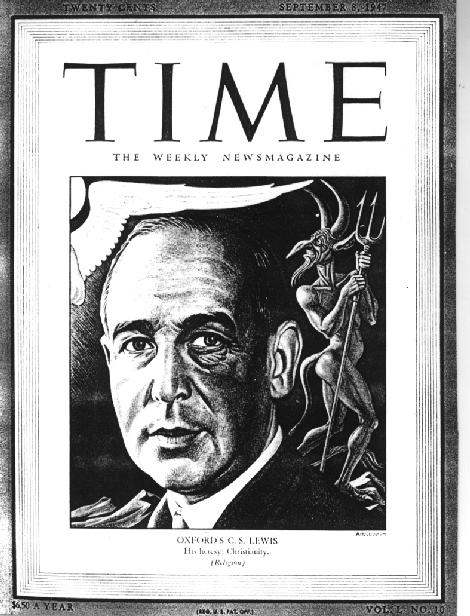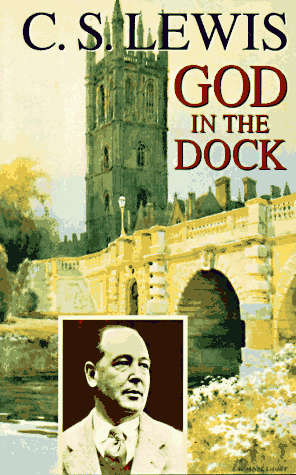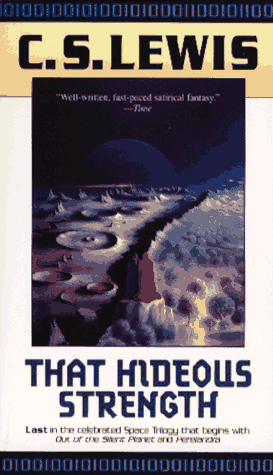| C. S. Lewis actually began his writing career at the age of six. He invented an imaginary world called Animal-Land or as we know it today, Boxen (Lindskoog 7). As Lewis grew up, he and his brother were raised in a bookish home without the influences of technology of the 20th century to bother them (Edwards). Boxen was a land of dressed up animals in different time periods. Lewis' brother, Warnie, wanted the animals to be a little more up to date compared to Lewis' fixing them in a medieval time period. With this idea, Jack set out to make the history of Boxen. He tried to make up centuries of imaginary past for the characters and lead them up to Warnie's characters of the present Boxen. However, Lewis did not finish because, it seemed too difficult to be able to come up with histories off the top of his head and then be able to match the other histories correctly (Boxen). After Boxen, Lewis began to find a keen interest in poetry at the age of thirteen. He did not publish any of his poems until his Spirits in Bondage: A Cycle of Lyrics, published in 1919 and Dymer, published in 1926, both written under his pseudonym Clive Hamilton (Visser). |
 | Lewis wrote theology, literary criticism, novels, and autobiographies, along with poetry. For a long time he was an atheist until he said, "In the Trinity Term of 1929 I gave in, and admitted that God was God, and knelt and prayed…" (Gresham). However he did not write about theology, the study of religious faith, until The Pilgrim's Regress: An Allegorical Apology for Christianity, Reason and Romanticism published in 1933. This is the story of Lewis's journey from skepticism to faith (Edwards). In 1940 came his next theology, The Problem of Pain. It was his first nonfiction written for the general reader explaining how God's ways make many suffer but it is all for the good of mankind. Many people know of Lewis from his famous work The Screwtape Letters published in 1942. It is a sarcastic work consisting of 31 letters where an elderly demon, named Screwtape, is instructing his pupil, Wormwood, in the art of torturing a young Christian soul (Safra 312). The Abolition of Man was published in 1943, dealing with "the poisoning of western thought and civilization regarding human nature and the moral law by the notion that our moral and aesthetic judgments are necessarily subjective" (Edwards). His next theology came two years later with The Great Divorce in 1945. In this work Lewis tells the difference between Heaven and Hell, not by their physical appearances but by the meaning of being there (Visser). In 1947 he published Miracles, which was based on how people perceive miracles and whether a person should believe in them or not (Visser). |
| During 1949, Lewis came out with The Weight of Glory. This theology deals with how Christians value their worldly possessions. Another one of Lewis's more famous works came out in 1952. Mere Christianity was actually about 15 speeches for a radio talk show (Kilby 271). The interesting fact about the title having the word "mere" in it is because there is not just merely one Christian faith. In 1958 came his Reflections on the Psalms, where he describes his confusions and errors in his study of the Psalms. Lewis analyzed the different forms of love all the way to the Greeks in The Four Loves, published in 1960 (Gresham). The World's Last Night published in 1960 displayed his thoughts on how prayers and the belief in God affect people (Safra 312). In 1963 before his death, he finished Letters to Malcolm: Chiefly on Prayer where he discusses the dialogue of man talking to God through prayer; however it was not published until 1964. The last three of his theologies were not published till after his death. Of Other Worlds was published in 1966. Then in 1967, Christian Reflections was published. His final theology was God in the Dock published in 1971. |  |
 | Lewis also wrote fiction on topics ranging from invented worlds to universal travel. Out of the Silent Planet was his first novel in 1938. This science fiction novel is about the beautiful caverns of Mars. It is an account of the voyage of Ransom, a linguist, to the planet Malacandra (Mars), where he learns that Thulcandra (Earth) is called the silent planet because there has been no communication from it in years. The spiritual being in charge of the Earth, having been corrupted, has essentially cut Thulcandra off from the other planets. Ransom is ultimately sent back to Thulcandra with the two earthlings who had kidnapped him and brought him to Malacandra (Gibson 25). Then came his Perelandra in 1942, the second book in his Space Trilogy. Ransom takes off for Perelendra (Venus) with the help of his angelic Oyarsa and lands in an ocean world with floating islands, bubble trees, small tame dragons, and seemingly two other inhabitants. They are human (but green) and one, the man, is missing. The woman is astonishingly innocent. Ransom's old nemesis, the evil physics professor, lands on Venus soon after Ransom and it is clear that he is possessed of an evil spirit and up to no good. Ransom and he battle over the woman's soul and the fate of the planet through long speeches. Ultimately, the battle becomes physical and deadly (Gibson 46). Before he published his Chronicles of Narnia, he published That Hideous Strength in 1945 his final volume of the Space Trilogy. The main characters are a young couple who got married out of love and are finding it hard going in "the real world" (Gibson 69). His final fictional work was Till We Have Faces: A Myth Retold in 1956. This story is Lewis's retelling of the myth of Psyche and Cupid. |
| C. S. Lewis wrote two autobiographies that allow present-day readers to peer into his mind and writing. Surprised by Joy: The Shape of My Early Life was published in 1955 and described his miraculous conversion from atheism to Christianity (Visser). One of his most moving works is A Grief Observed published in 1961 two years before his death. It was done very late because this book describes the loss of his wife Joy Davidman Gresham. He had to challenge his faith in God to understand why he had to suffer though so much pain. It describes his journey down a path of questions and finds in the end that God still loves him even if Lewis can not see proof of that (Gibson 13). |  |
 |  |  |